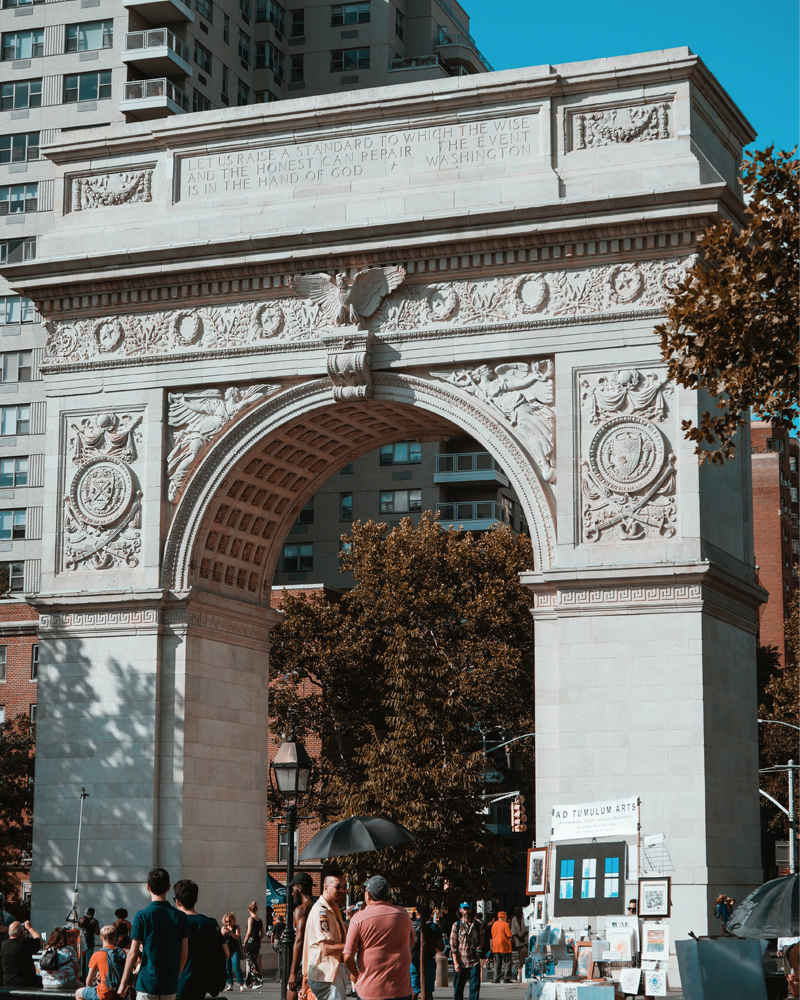
Boundaries:
14th Street to the north
Broadway to the east
Houston Street to the south
and the Hudson River to the west
Greenwich Village also contains several subsections, including the West Village west of Seventh Avenue and the Meatpacking District in the northwest corner of Greenwich Village.

Greenwich Village takes it name from from Groenwijck, the Dutch term for "Green District".
In the 20th century, Greenwich Village was known as an artists' haven, the Bohemian capital, the cradle of the modern LGBT movement, and the East Coast birthplace of both the Beat and '60s counterculture movements. Greenwich Village contains Washington Square Park, as well as two of New York's private colleges, New York University (NYU) and The New School.

Greenwich Village was once a much larger neighborhood that encompassed the entirety of the West Village.
Today, Greenwich Village is still defined by the influential figures that launched the great counter culture movements of the 20th century -- artists, poets, writers, playwrights and musicians such as Edna St. Vincent Millay, Dylan Thomas, Norman Mailer, Jack Kerouac, E.E. Cummings, Eugene O'Neill, Jackson Pollock, Andy Warhol and Bob Dylan, to name just a few.
